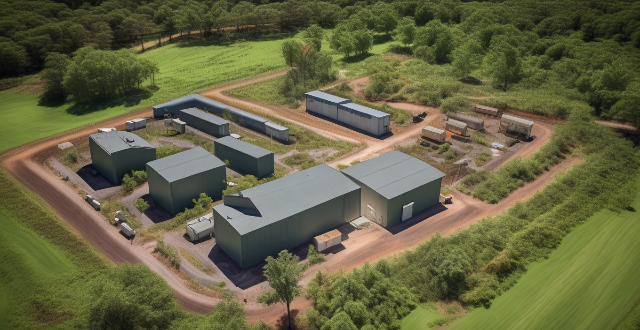Temperature Shorten

What is the lifespan of a lithium battery ?
The lifespan of a lithium battery is affected by various factors such as the type of battery, usage patterns, and environmental conditions. In general, most lithium batteries have a lifespan of 2-3 years or 300-500 charge cycles, whichever comes first. However, this can vary significantly based on the specific application and usage patterns. Different types of lithium batteries have different lifespans. For example, Lithium-ion batteries typically have a longer lifespan than Lithium-polymer batteries. Additionally, some newer types of lithium batteries, such as solid-state batteries, may have even longer lifespans than traditional lithium-ion batteries. How you use your lithium battery can also affect its lifespan. For example, if you frequently charge your battery to 100% and then discharge it completely, this can shorten its lifespan compared to if you only charged it to 80% and discharged it to 20%. Similarly, if you frequently expose your battery to high temperatures or cold temperatures, this can also shorten its lifespan. Finally, the environmental conditions in which your lithium battery is stored and used can also affect its lifespan. For example, if you store your battery in a hot or humid environment, this can shorten its lifespan compared to if you store it in a cool, dry environment. Similarly, if you frequently expose your battery to extreme temperatures or humidity levels while using it, this can also shorten its lifespan. To maximize the lifespan of your lithium battery, there are several things you can do: * Avoid exposing your battery to extreme temperatures or humidity levels. * Try to keep your battery's charge level between 20% and 80% as much as possible. * Use a high-quality charger that is designed specifically for your type of lithium battery. * If possible, try to use your device's built-in power management features to help regulate charging and discharging patterns.

How does temperature control affect food safety ?
This text discusses the impact of temperature control on food safety, emphasizing the risks associated with improper temperature management and the benefits of maintaining appropriate temperatures. It highlights the danger zone for bacterial growth, spoilage due to mold and yeast, and toxin production from bacteria. The article also outlines best practices for temperature control in refrigeration, freezing, cooking, reheating, handling, and storage to ensure food safety.

Why is temperature control important in food storage and preparation ?
Temperature control is crucial in food storage and preparation to ensure safety, quality, and longevity of food products. It prevents bacterial growth, avoids toxin production, maintains flavor and texture, preserves nutrients, extends shelf life, reduces waste, saves energy, and reduces environmental impact. Proper temperature control helps to enjoy delicious and healthy meals while minimizing the risk of foodborne illnesses and food waste.

What is the ideal room temperature for optimal sleep ?
The ideal room temperature for optimal sleep is between 60-67°F (15-19°C). This range is considered to be the most conducive for a comfortable and restful sleep. The reasons for this include regulation of body temperature, improved REM sleep, reduced wakefulness, and comfort and relaxation. To achieve the ideal room temperature, consider using an air conditioner or fan, adjusting your bedding, dressing appropriately, and using a programmable thermostat.

What factors affect the performance and lifespan of a power battery ?
The performance and lifespan of a power battery are influenced by various factors, including charging habits, discharge rates, temperature conditions, mechanical stress, age, quality of the Battery Management System (BMS), and chemical composition. Overcharging or undercharging can lead to reduced lifespan due to heat buildup or memory effect, respectively. High discharge rates and deep depths of discharge can stress the battery and shorten its longevity. Temperature extremes and fluctuations affect efficiency and stability, while mechanical impacts and vibrations can cause physical damage. Aging is an inevitable factor, but a well-designed BMS can mitigate many issues related to charge and temperature control. Different chemical compositions also play a role in stability and lifespan characteristics. Proper care and management are essential for optimizing battery performance and extending its lifespan.

What is the ideal temperature for indoor plant growth ?
Indoor plants generally thrive in temperatures between 65°F to 75°F during the day and slightly cooler at night, along with proper humidity and air circulation. Maintaining these conditions helps promote healthy growth and flowering. Use a thermometer, avoid drafts, and adjust heating or cooling as needed to keep plants comfortable.

How do different ecosystems respond to changes in temperature and precipitation patterns ?
This article discusses the impacts of changes in temperature and precipitation patterns on different ecosystems, including forests, grasslands, wetlands, and arctic tundra. It highlights how these changes can affect plant growth and productivity, species composition, water availability, nutrient cycling, soil erosion, and other ecosystem processes. The article also emphasizes the importance of understanding these impacts to inform conservation and management strategies for ecosystems in a changing climate.

How can I save energy with appliance usage at home ?
The provided text offers energy-saving tips for various home appliances, including refrigerators, dishwashers, washing machines, dryers, ovens and cooktops, lighting, and thermostats. It suggests setting the fridge temperature correctly, defrosting it regularly, and keeping it full but not overstuffed. For dishwashers, it recommends running full loads and using the energy-saving setting. Washing machines should be used with cold water and the appropriate wash cycle. Dryers should have a clean lint filter after each use and dry similar fabrics together. Smaller appliances should be used for small meals when cooking, and the oven door should remain closed. LED bulbs should replace traditional incandescent bulbs, and lights should be turned off when not in use. A programmable thermostat should be used to set specific temperatures for different times of the day, and the temperature should be lowered in winter and raised in summer. Following these tips can significantly reduce home energy consumption, save money on utility bills, and contribute to a more sustainable environment.

What is the function of thermoregulation in high-tech sportswear ?
The text discusses the function of thermoregulation in high-tech sportswear. It explains that thermoregulation is crucial for athletes to maintain their optimal body temperature during physical activities, as overheating or being too cold can affect their performance and increase the risk of injury. High-tech sportswear uses advanced materials and technologies to regulate temperature and manage moisture, including insulation, ventilation, moisture-wicking capabilities, and quick drying. These garments also adapt to different environments through layering systems and seasonal variants. Overall, the function of thermoregulation in high-tech sportswear is essential for athletes to stay comfortable, focused, and efficient during their activities.

Are permanent magnet motors more susceptible to damage from high temperatures compared to other motor types ?
Permanent magnet motors are more susceptible to high temperatures due to demagnetization and thermal expansion issues, compared to induction motors and switched reluctance motors which primarily face insulation degradation and material fatigue respectively.

How do different climates affect the choice and efficiency of energy storage systems ?
Climate plays a crucial role in determining the type, choice, and efficiency of energy storage systems. Variations in temperature, humidity, and other environmental factors can significantly impact the performance and longevity of these solutions. For instance, high temperatures can cause battery degradation and reduce their lifespan, while low temperatures can decrease the battery's capacity and output power. High humidity can cause corrosion and damage to the battery's components, reducing its lifespan and efficiency. Similarly, climate change can affect the availability of water for pumped hydro storage systems, and higher temperatures can increase evaporation rates, reducing the amount of water available for energy storage. Therefore, it is essential to consider the local climate conditions when selecting and designing energy storage systems to maximize their performance and longevity.